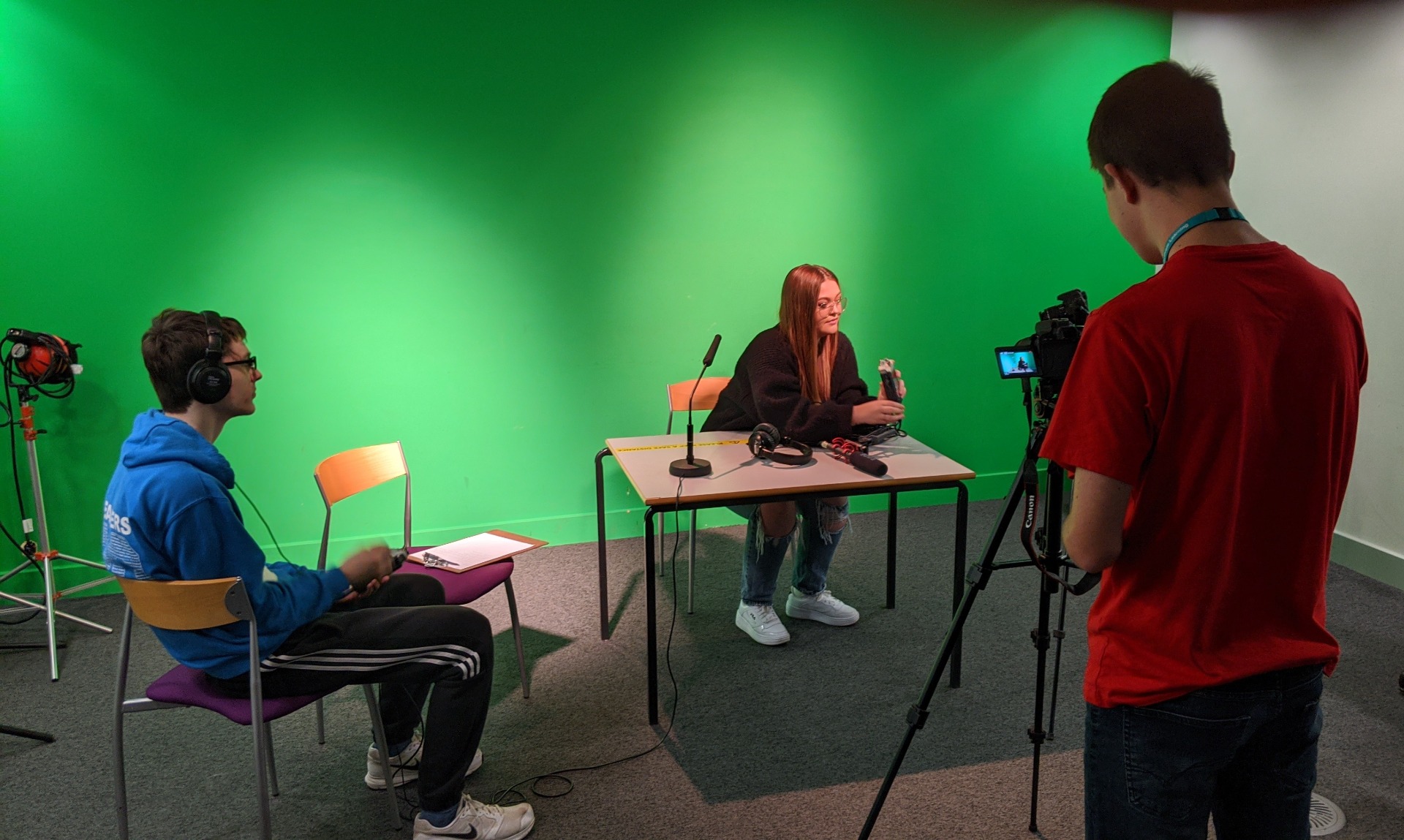Sound Design
What is sound?
Vibrations caused by an object, like a clap or talking, causes the air surrounding it to vibrate. The vibrating air causes the human eardrum to vibrate, which the brain interprets as sound. Hard surfaces help sound to reverberate and softer surfaces absorb sound, the sounds in rooms like this are considered as "dry" or "dead".

A room like a church would would be very reverberant because there is a lot of hard surfaces.

A room like a living room would have a small amount of reverb and its acoustics would be considered as dry.
Using A Zoom H4n
We used the Zoom H4n Sound Recorder and tested in different locations around the college. Here is what we got:
This recording has a lot of reverb as the staircase was very tall and had no soft surfaces.
I like this recording as there was no reverb and the audio sounded crisp.
This audio was better than the staircase but still a slight reverb as the sports hall was large and empty when we recorded.
I like this recording because the sound levels were consistent and there wasn't any reverb as we were in an small enclosed space.
Our Equipment
Zoom H1n
Pros:
- Can use internal microphones
- Useful with lavalier/tie microphones
Cons:
- Has a 32GB SD card limit

Zoom H4
Pros:
- Can use internal microphones
- Useful with an external microphone
- There is a remote that can be bought separately which can be useful for handsfree audio recording.
Cons:
- Not as user friendly as the H4N

Zoom H4n
Pros:
- Can use internal microphones
- Useful with an external microphones for example Boom or shotgun
- Very good for portability
Cons:
- More expensive compared to the H4

How to use a zoom H4n Pro [PRACTICE VIDEO]
Me, Emily and Alex filmed a video showing how to use a Zoom H4n Pro, use levels and how to add an external microphone. My job was to film using a dual camera set up, Emily was the front of the video and Alex controlled the audio. I wish that I could have captured some better close up shots when filming this. If I was to remake this video from the start I would have written a full script, as Emily only used notes in this version, and filmed it in segments rather than all in one.

Rather than writing a full script, we wrote notes that Emily could use to guide her. We chose this as it meant that she had more freedom to say what she wants and we don't have to take lots of different shots from the same angle. We mad sure that Emily knew how to use everything to a confident ability before filming. When it came to filming the script was placed on a chair to the right of her which was not in the main angle camera.


Thanks to Paul who took the behind the scenes photos.
Studio Recording
Another way to record audio is in a studio, these are rooms where the walls are covered in acoustic panels which have bumpy surfaces and are made out of foam to break up sound waves and reduce the amount of reverberation. This is good as it makes sound more "dead" and "dry" for a crisp sound recording. When recording, you need a microphone which plugs into an audio interface which plugs into a computer and runs on Adobe Audition.
Our Equipment

NT1-A Studio Microphone

Acoustic Microphone Shield

Behringer U-PHORIA UMC204HD

Acoustic Panels
